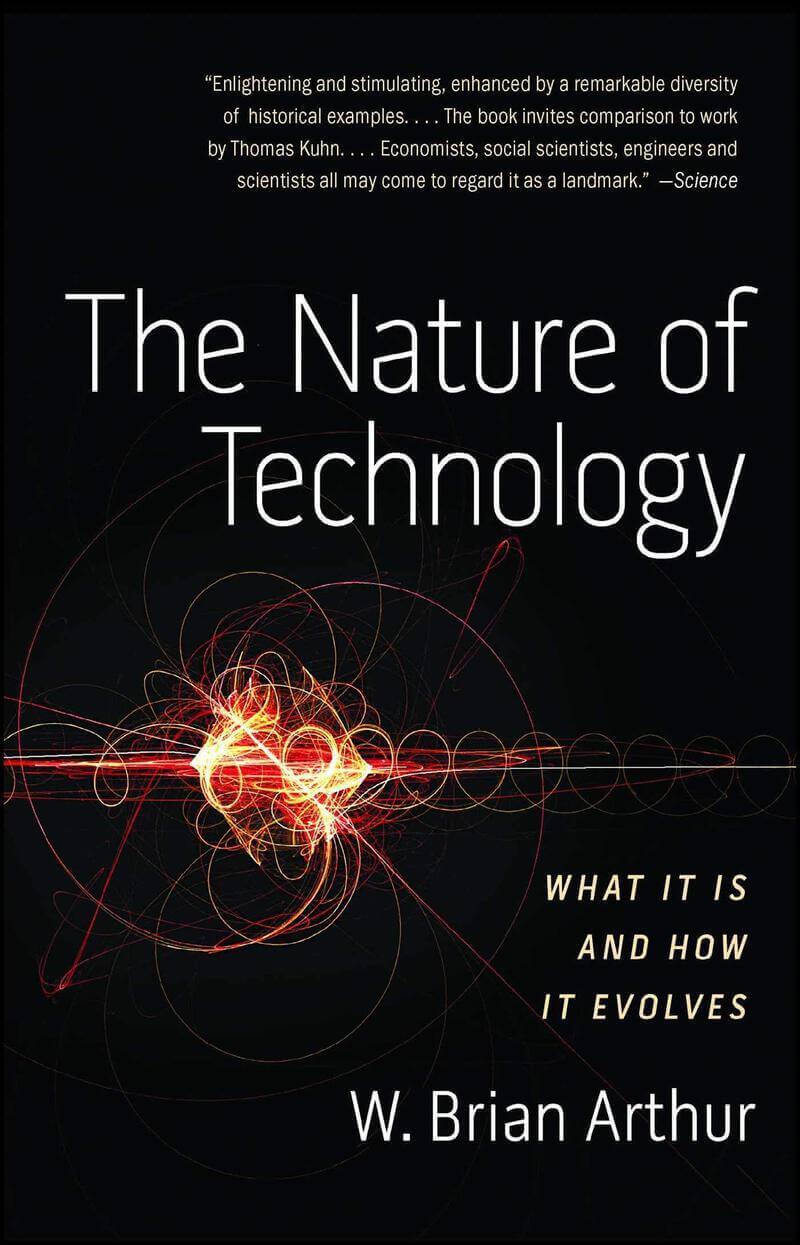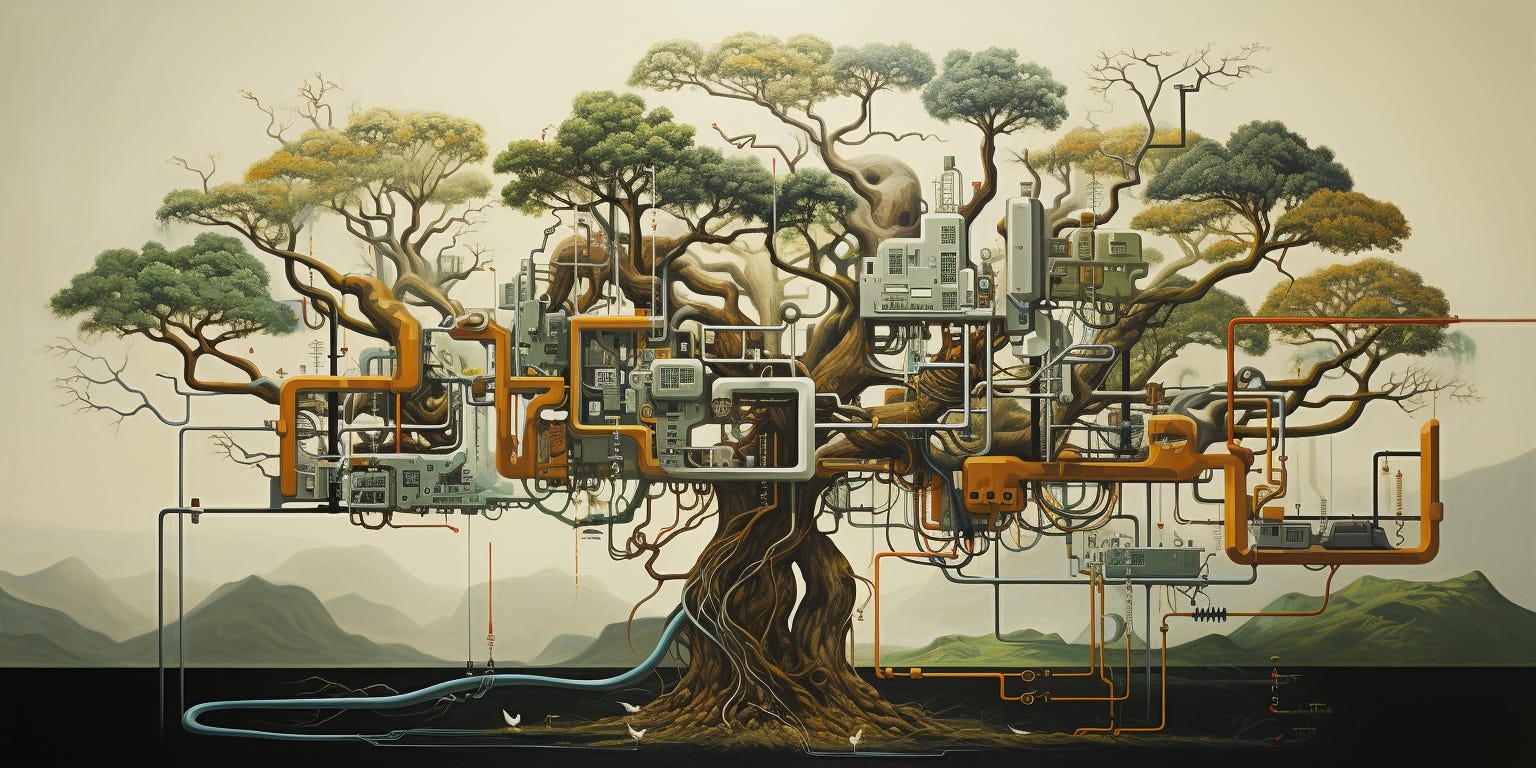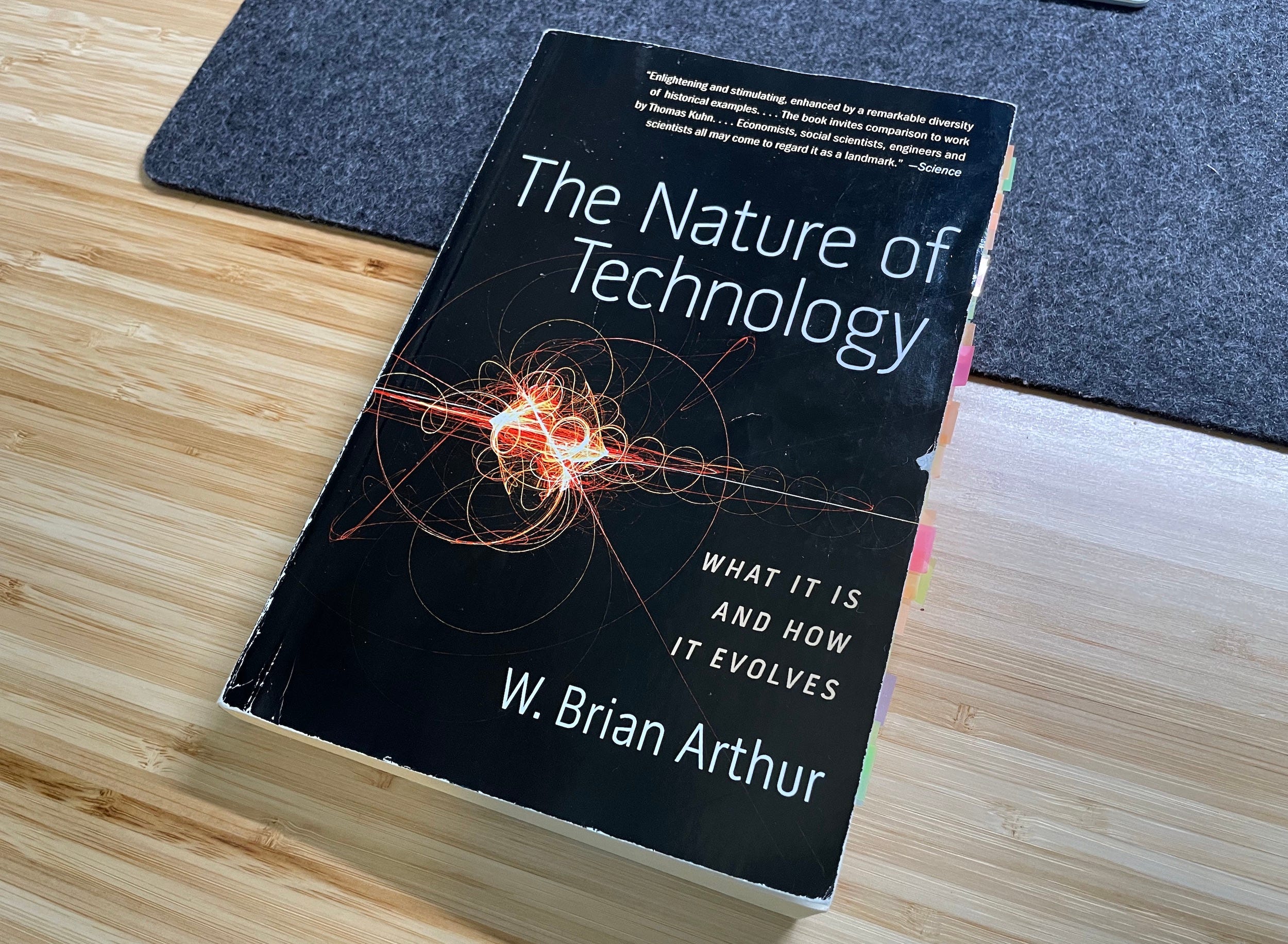The Nature of Technology
by W. Brian Arthur
- Nonfiction
- Shelves: technology, science, history, economics, philosophy
- 256 pages
- ISBN: 9781416544050 (Goodreads)
- Format: Paperback
- Buy on Amazon

Innovation happens in increments. Contrary to popular belief, the “Eureka” inventor is mostly imaginary. Not that there aren’t breakthrough moments in scientific discovery, they do happen. But nearly all of the technologies we use every day — the contributors to the economic growth boom that started during the enlightenment — are a result of the everyday tinkering and deliberate trial and error of thousands of experimenters. Matt Ridley’s book How Innovation Works shifted my thinking profoundly on this; innovation is gradual, recombinant, serendipitous, and distributed.

With his fantastic book The Nature of Technology, W. Brian Arthur draws similar conclusions, and paints an interesting picture — with strong and not-coincidental parallels between the way technology progresses and how evolution works in the biological domain. Evolution’s notions of “survival of the fittest”, adaptations, natural selection each have their own analogies in the world of technology. Natural selection is powered by the iterative process of random, environment-driven mutation (the adaptation of traits). They build on top of an existing base of adaptations (the organism itself) to iteratively improve its fitness to its environment. Arthur set out to create a “theory of evolution of technology” here, and it’s a interesting intellectual exercise.
Technologies inherit parts from the technologies that preceded them, so putting such parts together—combining them—must have a great deal to do with how technologies come into being. This makes the abrupt appearance of radically novel technologies suddenly seem much less abrupt. Technologies somehow must come into being as fresh combinations of what already exists.
His first objective is to create a definition of what “a technology” actually is, and how technologies come to be.
His definition has two elements: you have phenomena and technology.
A phenomenon is a natural effect. It exists independently of humans or technology. They are the “genes” of technology. The Doppler effect, gravitation, spectroscopy, thermodynamics.
A technology is a “means to a purpose”, an assemblage of practices and components, and a collection of devices and engineering practices. All technologies capture and harness a complex of phenomena to achieve a purpose. A jet engine, a telescope, the laser, even things like currencies, tax codes, and companies are, by this definition, technologies. They’re man-made entities that harness natural effects.
Technologies evolve in a hierarchy: one new technology builds on a platform of prior discoveries. Think branches of a tree. In the world of video games the “tech tree” metaphor is literal. Strategy games draw out the branches, with the player following a logical path upward from base discoveries to their successor technologies. Because they have a modularity in how they combine into assemblies, technologies are composable — meaning we can derive new and novel tech through recombinant evolution.

Arthur proposes a term for describing the organization of technologies into logical groupings, which he calls domains: clusters of technologies that share a family of similar effects that drive them. Capacitors, amplifiers, inductors, and transistors we could put in the electronics domain. DNA purification, radiolabeling, and enzyme cutting we could group as genetic engineering. Domains give is a way to describe technologies in terms of their relationships to one another and their effects. There’s yet another parallel to the biological world. We have technologies, assemblies, subassemblies, domains in the world of innovation. And in biology: kingdom, phylum, class, order, family, genus, species. A hierarchy.
Interestingly Arthur points out that many innovations arise from a reapplication of an existing technology or concept, what he calls “redomaining”. Many innovations are improvements along an existing trend line — when we make an engine more fuel efficient, or come up with a new geometric structure for stronger bridges. But the biggest step changes happen when an existing technology is applied in a new functional domain. When aircraft controls (rudders, ailerons) moved from the domain of the hydraulic and mechanical and into the digital, that opened up the idea of computer-controlled fly-by-wire systems, which in turn created a new world of possible aircraft designs. We took the same fundamental controls, but adapted them to the new domain.
When new technologies appear, an economy doesn’t look at it and decide when and where to adopt the tech selectively. Technologies appear unpredictably, and economies react and flow with them:
In fact, one thing I will argue is that the economy does not adopt a new body of technology; it encounters it. The economy reacts to the new body’s presence, and in doing so changes its activities, its industries, its organizational arrangements—its structures. And if the resulting change in the economy is important enough, we call that a revolution.
The book documents at length dozens of examples that demonstrate the ideas. Arthur clearly has a deep, well-researched knowledge of the history of technology to draw from. Overall it’s a fascinating and brief read, with a hundred unique threads to follow in its bibliography. Highly recommended.

Key Takeaways
- Definition: a “technology” is a means to a purpose, harnessing a natural effect, and also may be composed of other subcomponent technologies
- Technologies aren’t “invented” from nowhere, they’re assembled from combinations of prior technologies
- Technology develops in a recursive structure
- Each technology composes into assemblies, and those into subassemblies
- A jet engine and all of its various assemblies and components
- Unlike in biological systems, where all things descend from previous things, some tech appears to materialize from nothing — not only improved or updated versions of previous tech
- You can say radar descends from radio, but no amount of tweaking to radio circuits ends in radar — it requires a different principle
- The key is to look inside the subsystems and components of a given novel technology
- The laser looks nothing like anything that came before, but if you open it up you see familiar pre-existing subcomponents combined in a novel way
- Novel technologies are new combinations of parts inherited from previous ones
- Fresh combinations of what already exists; it’s the recombination that’s novel — innovation is recombinant
- As far back as 1910, Joseph Schumpeter was already onto the idea of recombination
- Changes in economic development arose from “new combinations of productive means”
- Schumpeter discovered that economies are not in equilibrium without external disturbances, but could generate energy from within (recombination)
- It’s about cumulation — because innovation comes from combinations of existing tech, the new descendant technology adds to the pile of now-existing tech going forward
- Technology is self-producing: “autopoietic“
“The more there is to invent with, the greater will be the number of inventions” —William Fielding Ogburn
- Book thesis builds from 3 fundamental principles
- All technologies are combinations — combined from components, assemblies, subsystems available
- Each component of a technology is itself a technology
- All technologies harness one or more effects or phenomena to work
- A technology supplies a functionality
- GPS locates
- Bridges carry
- Dams store (water, energy)
- Modularity allows for technology re-use, where a single technology is developed into a reusable component to be included in successor technologies — a transistor in silicon, a compressor in an engine
- The value of modularity has a logical limit. Analagous to Adam Smith’s “division of labor”, there’s a rational limit to the cost-benefit of modularizing:
It costs something—mental effort at the very least—so partition the components of a technology into separate functional units. So it pays to divide a technology into such modules only if they are used repeatedly—only if there is sufficient volume of use, There is a parallel here with what Adam Smith said about the division of labor. Smith pointed out that it pays to divide a factory’s work into specialized jobs, but only if there is sufficient volume of production. Modularity, we can say, is to a technological economy what the division of labor is to a manufacturing one, it increases as given technologies are used more, and therefore as the economy expands. Or, to express the same thing in good Smithian language, the partition of technologies increases with the extent of the market.
- An analogy: Modularity : technology :: division of labor : manufacturing
- Phenomena are natural effects, to be harnessed by a technology
- Science vs. technology
- Science uncovers an effect, technology applies it
- A technology can exist without understanding the underlying science
- The two co-evolve symbiotically
- A domain is a “language”, technologies are words and sentences
- Individual technology : domain :: a computer program : a programming language
- Technology is not a fixed set of limited functions
- It gives us a vocabulary of elements that can be programmed in novel ways to novel purposes
- A computer is both a technology and a predecessor to future technologies
- It’s a standalone tool for single actions — calculations, writing documents
- But also offers an entire environment for reprogramming the computer to new ends — writing software
- Phenomena echo across fields
- Principle transfer
- Seeing analogies
- Principle transfer
Principles often apply across fields. Or, I should say phenomena echo across fields. Where there are waves—acoustic, oceanic, seismic, radio, light, X-ray, particle—there is interference (two or more waves can produce patterns by superimposing on one another); there is a spectrum of frequencies; there is resonance (where the system oscillates at its natural frequency); there is refraction (where a wave changes direction when it enters a new medium); and there are Doppler effects (perceived changes in frequency if the wave source is moving relative to us). All these provide concepts of use—principles. And these in turn can be borrowed from traditional domains of use and set to work in new ones.